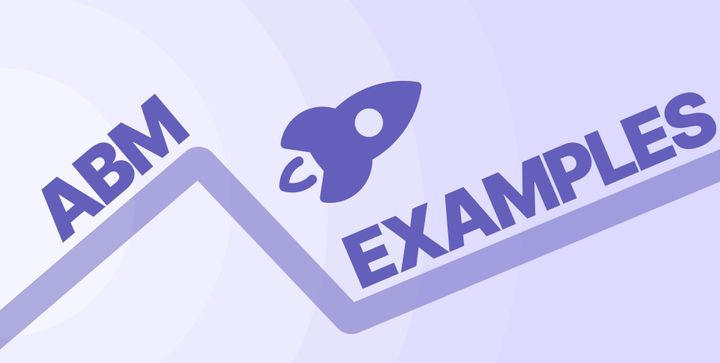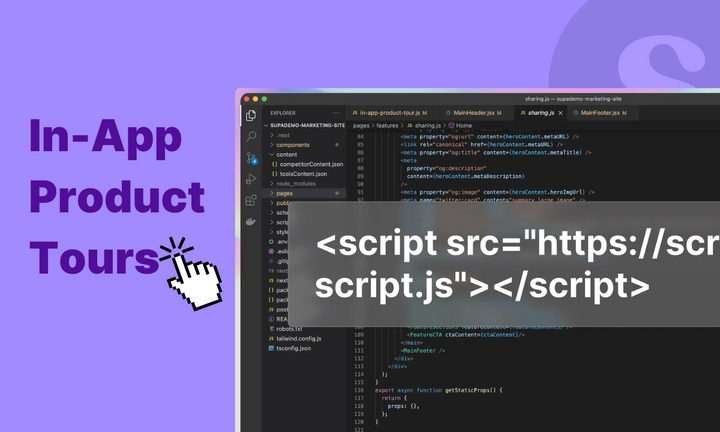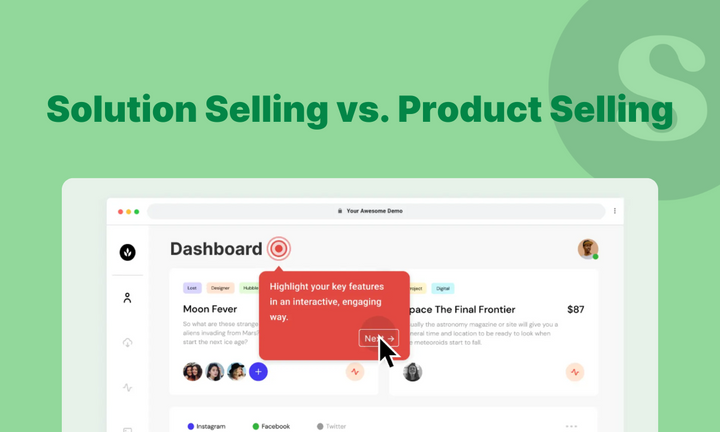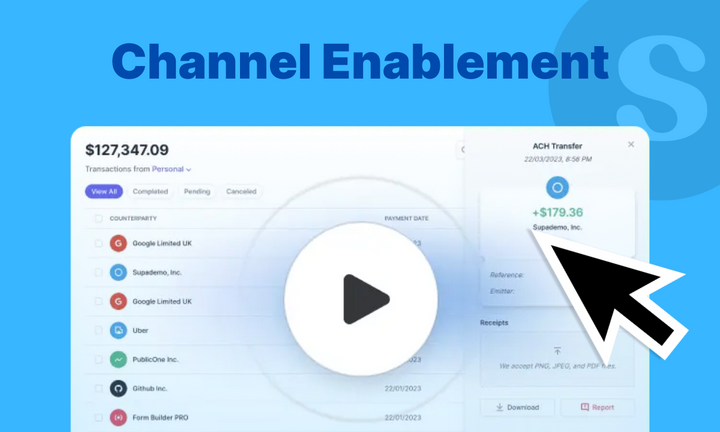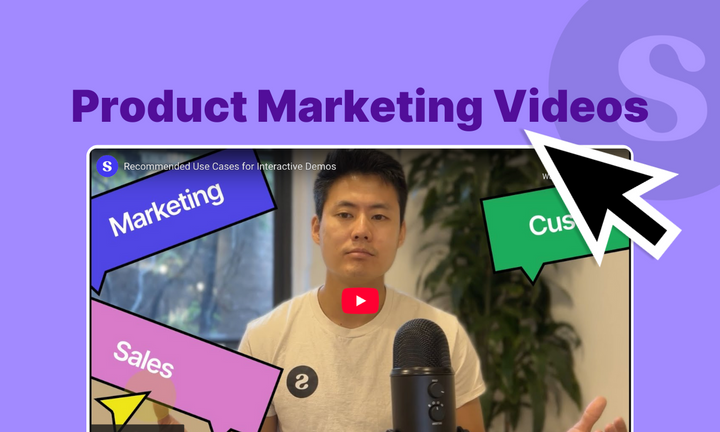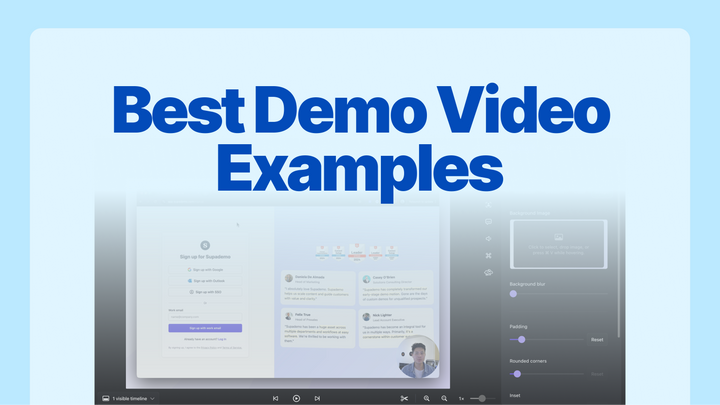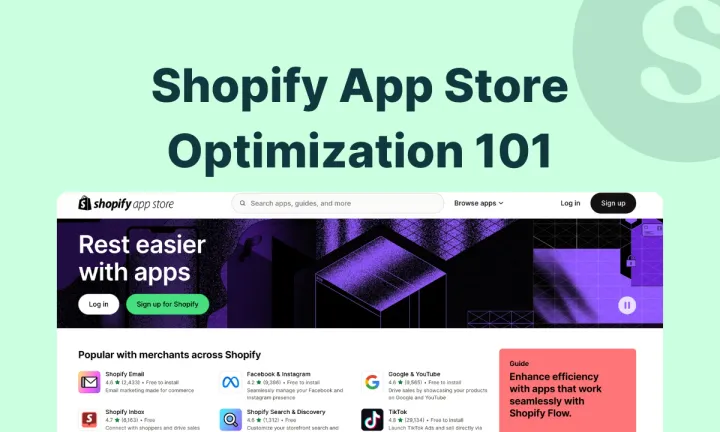B2B selling has become increasingly complex.
Marketing teams chase promising leads but lack real buying intent, while sales reps craft countless personalized messages only to hear crickets.
Such disconnect between teams not only creates internal friction but leaves significant revenue on the table.
Enter account-based marketing (ABM) - a strategic approach transforming how B2B companies win high-value accounts. Instead of casting a wide net, ABM engages multiple decision-makers within target accounts through coordinated marketing and sales activities.
But what does successful ABM look like in practice?
We've analyzed 5 powerful ABM campaigns from industry leaders like Visier, SmartSheet, and Workforce to answer exactly that. Each example reveals tested tactics and actionable insights you can apply to your ABM strategy.
What is Account-based Marketing?
Account-based marketing (ABM) is a B2B strategy that concentrates sales and marketing resources on specific target accounts within a targeted market.
Unlike traditional marketing that casts a wide net, ABM treats each account as a market of one. At its core, ABM involves:
- Identifying and targeting specific high-value accounts
- Engaging multiple stakeholders within each account (typically 10+ decision-makers)
- Creating personalized marketing campaigns based on account research and intent data
- Coordinating sales and marketing efforts throughout the buyer journey
For example, consider a B2B software company that can use different approaches to target accounts in the healthcare and manufacturing industries.
In Healthcare, businesses can engage clinical directors, compliance officers, and hospital administrators through medical conference sponsorships focusing on patient care optimization, HIPAA compliance, and ROI metrics specific to hospitals.
As for manufacturing, their targeting can involve engaging plant managers, IT directors, and C-suite executives with role-specific messaging about efficiency gains.
While there is no set definition of ABM, this one by ITSMA and ABM leader intelligence sums it up closely, "Account-Based Marketing (ABM) is a strategic approach to designing and executing highly-targeted and personalized marketing programs to drive business growth and impact with specific, named accounts."
This approach is built on three core principles:
- It’s strategic and focuses on building relationships and increasing revenue, not just leads.
- It’s highly personalized to individuals rooted in deep customer insights, not a one-size-fits-all approach.
- It calls for ongoing collaboration between sales and marketing, not just handoffs.
Key Benefits of Running an Account-based Marketing Campaign
After understanding ABM, let's explore why companies increasingly adopt this approach.
From improved engagement rates to faster sales cycles, here are the key benefits of implementing an ABM strategy.
1. Improved Engagement and Conversion Rates
Engagement naturally increases when you tailor your messaging to specific accounts' needs and pain points.
Such personalized approaches boost the company’s key metrics, including a 28% increase in overall account engagement and a 25% rise in the marketing-qualified lead (MQL) to sales-accepted lead (SAL) conversion rates. Rather than receiving the same old one-size-fits-all messaging, prospects see content that directly addresses their pain points and is relevant to their company’ size, and specific use cases.
2. Optimized Resource Allocation
ABM helps you spend smarter, not harder. By focusing on predefined account lists and creating targeted content, your entire organization benefits. You can:
- Save wasted ad spend on unqualified leads
- Focus sales efforts on target accounts showing genuine buying intent
- Create content that serves multiple accounts within similar industries
- Scale personalization efforts through account-specific templates and frameworks
3. Enhanced Sales and Marketing Alignment
One of the widely known pain points is how siloed marketing and sales efforts are. ABM breaks down these barriers by making both teams indispensable to running the campaign. While the marketing team analyzes intent signals for different account lists and crafts targeted messaging, sales get highly qualified leads and personalized sales assets to move the deal down the funnel.
4. Improved Customer Retention
The personalized nature of ABM doesn't just help win new business—it builds stronger, longer-lasting relationships. 44% of businesses report that ABM helps enhance customer retention and loyalty. This improvement stems from a deep understanding of customer needs and personalized communication across the customer journey.
These benefits compound over time, creating a more efficient and effective B2B marketing and sales operation.
The Best ABM Examples to Inspire Your Next Campaign
One of the most effective ways to get inspired for your ABM strategies is to dive into established brands’ successful ABM campaigns.
We’ve curated the 5 best account-based marketing examples, where we’ll talk about unique tactics and what you can learn for launching your campaigns.
1. Workforce
- Content ungating strategy
- Intent data tracking and buyer journey mapping
- Target audience identification using Account Intelligence
One key ingredient to any successful ABM strategy is improving the customer experience throughout the buying journey. Workforce, one of the largest employee experience and workforce management solutions, learned this lesson firsthand.
Initially, their approach was purely transactional—gating all content and blasting generic messages to leads without consideration for their specific needs or buying stage.
"We didn't properly target our customers," admits Linda Johnson, Global Director of Marketing Operations. "We were just doing top-level targeting and lacked the tools to reach the right decision-makers. The overall approach was too generic.
So, the Workforce team took these two big steps:
1. They used Demandbase's Account Intelligence to identify and profile their target accounts that allowed them to align their resources around companies with the highest potential value.
2. They made the bold move to ungate all their content—from templates to webinars—letting prospects freely access resources without filling out forms.
The use of ungated content delivered two key benefits:
✅ Better intent data through natural tracking of how prospects interact with content
✅ Deeper insights into which topics and formats resonated with different buyer personas
With these insights, Workforce invested their efforts in personalized outreach based on actual engagement patterns, leading to a 121% increase in ready to buy accounts reaching WorkForce Software in 6 months.
This shift toward ungated, interactive content is increasingly becoming a go-to ABM tactic.
For instance, Supademo, a demo automation platform, takes a similar approach with its vast library of interactive product demo showcases. Instead of making users sign up to see the product’s features, they let buyers explore their tool's full functionality through self-guided demos.
This transparency builds trust and provides rich engagement data that you can leverage to understand which features and use cases resonate with different buyer personas.
Remove friction from the buying process and track natural engagement patterns, to gain deeper insights into your prospects' needs. Rather than chasing leads through form fills, you can craft targeted outreach based on their interests and behaviors.
2. Clari
- Lost account re-engagement through targeted display advertising
- Account-specific landing pages
When Clari's marketing team analyzed their pipeline, they discovered an untapped opportunity—hundreds of lost deals from the previous year.
Instead of writing these accounts off, Senior Marketing Manager Kyle Dugan saw potential for revival.
"These weren't just cold leads," explains Dugan. "These were accounts that had already shown interest, gone through demos, and understood our value proposition. Their original pain points likely hadn't disappeared."
To make this happen, their team aligned revenue development managers and account executives and leaned on running display ads using 6sense, a revenue marketing platform.
To make the whole campaign a success, they involved a marketing team to craft standout display ads to cut through the noise.
They made an target account list of senior-level personas and curated targeted landing pages using Folloze, a buyer experience platform. Once an account reaches a specific landing page, the revenue team would track buyer’s signals and target them to revive the lost interest.
The results were impressive: Clari generated $500k in the pipeline by targeting 42 accounts through four qualified meetings.
Don't write-off lost opportunities without anlayzing them beforehand. They might be the hideden goldmine of opportunity as these accounts already understand your value proposition, and their original pain points likely still exist.
3. Visier
- LinkedIn ads based on intent keyword targeting
- Dynamic audience building
- Account qualification scoring
Like most B2B companies, Visier, a global leader in people analytics, considers LinkedIn as the bread and butter for their sales pipeline. However, they realized they needed deeper customer insights and a more unified go-to-market strategy to maximize their account engagement.
So, they combined LinkedIn with Demandbase—creating "the power duo."
This integration gave Visier's team access to Demandbase's Account Intelligence, including qualification scores, pipeline prediction metrics, page view analytics, and revenue data. Armed with these insights, they scoured scour LinkedIn to identify targeted stakeholders and initiated conversations.
Another area Visier shined is through running intent specific keyword LinkedIn ads. They called it the “land and expand” approach which also brought together their sales and marketing team, a key ingredient of a successful ABM campaign.
This is how it panned out:
- Pulled intent keywords from Demandbase for a specific module they offer
- Crafted ad copy tailored to the module
- Built target accounts lists
- Pushed these lists through Demandbase and LinkedIn integration, targeting precise accounts
- Tracked customer engagement using audience insights from LinkedIn
This "land and expand" strategy perfectly aligned their sales and marketing teams. The results were impressive:
- 80% engagement rate with enterprise-level accounts
- 206% higher likelihood of converting opportunities
- 234% increase in click-through rates
Instead of treating LinkedIn and other platforms as isolated channels, create a cross-platform strategy by combining intent data from one platform to inform targeting on another.
4. Smartsheet
- Sales-marketing data integration
- Multi-dimensional customer segmentation
Smartsheet's approach offers a masterclass in strategic, data-driven, account-based marketing, going beyond traditional targeting.
The key reason behind ABM campaigns failure is bare minimum segmentation. Smartsheet took it to the next level.
They didn't just categorize high value accounts by industry or size. Instead, they created a versatile view of their ideal customers by combining firmographic data, deep contact insights, and nuanced behavioral signals.
By integrating ZoomInfo's intent data with their Salesforce and Marketo platforms, they turned raw numbers into actionable intelligence that could guide every marketing and sales decision.
Friction is the silent killer of conversion and Smartsheet’s strategic use of Zoominfo’s FormComplete gave them an edge to enrich customer data while providing valuable info to their sales team.
“We achieved a 40%+ increase in form fills on every multi-field form where we added FormComplete,” Bennett says. “Our highest-volume demo form resulted in an 84% increase in MQLs sent to sales, a 26% increase in opportunity rate, and a 59% increase in win rate.”
Another aspect of this success is how marketing and sales collaborated, which makes any ABM campaign successful.
The marketing team’s role shouldn’t be limited to mere handoff. It must be ingrained throughout the conversion process to keep providing sales with the right information, such as pitch decks or battle cards to close the deal.
Identify friction points in your conversion process. For example, you can use a data enrichment tool to keep prospect's data complete while giving asking for basic information from the buyers.
5. Metrikus
- Hyper-specific intent signals tracking
- Automated engagement sequences
- 6-month data refresh cycles
Metrikus, a building efficiency software platform, demonstrates leveraging intent data in ABM campaigns.
Rather than drowning in data, they zeroed in on the signals that mattered through Cognism’s database. For example, they used a hiring trigger to identify an organization's hiring in the last six months, as it suggests a need for scaling office space.
Another way they went all-in-on data was by tracking 25 key topics and going after their highest intent data topic—smart buildings.
The team also maintained data hygiene through six-month list audit cycles. They also streamlined lead capture by partnering with Cognism—rather than overwhelming prospects with lengthy forms; they collected just names and email addresses while enriching contact data on the backend.
This approach significantly reduced form abandonment while maintaining lead quality.
Similar to other success stories, an impressing aspect was their sales and marketing alignment. Their demand generation team created integrated workflows where marketing generated refined leads based on intent signals, and sales received pre-qualified, context-rich prospects.
This coordinated approach ensured no opportunities slipped through the cracks while maintaining personalized outreach at scale.
Look beyond traditional intent signals. Industry-specific indicators like office moves, sustainability announcements, or hiring trends can predict buying intent more than generic engagement metrics.
Interactive Product Demos: Where do They Fit in ABM Marketing Strategies
Interactive product demos are self-paced guided tours that let users interact with various features by clicking, hovering, tying, or scrolling on the screen. Here's how an interactive demo looks like. 👇🏼
From delivering hyper-segmented experience at scale to enhancing collaboration between marketing and sales teams, such product demos come as a complete package.
Consider a project management software company targeting construction companies. Instead of presenting a one-size-fits-all demo, they can create an experience that looks and feels like it was built exclusively for professional constructors and managers. The demo might showcase specific features helpful to construction workers, like on-site shift management or time tracking, and use industry-specific terms to make it more relatable and targeted.
Aaron Whittaker, VP of Demand Generation & Marketing, Thrive Digital, shares how their team implements such demos,
“For interactive demos, we've found product configurators to be particularly effective, especially for complex or customizable offerings. For instance, we created an interactive demo for a software client that allowed potential customers to build their ideal package, seeing in real-time how different features impacted functionality and pricing. This hands-on experience not only increased engagement but also shortened the sales cycle by helping prospects better understand the product's value proposition.”
Interactive product walkthroughs can be a critical element because they bring a lot of benefits:
Shorten the sales cycle
These demos are easy to create, and you can quickly build a library of pain point-specific demos for different account-based ICPs. Having such on-time ready demos to share, the sales team can reduce the time spent on starting a demo from scratch.
Collect first-party intent data
Each demo serves you fresh, insightful data into your buyer’s interaction from which slide they spend the most time on to if they watched the entire demo. Metrics like completion rate, drop-off rate, click rate, etc., can feed your CRM and help you enrich your target account profile and create hyper-targeted messaging.
Build trust among potential customers
By showcasing what your product looks like, how the navigation is, and how it solves the buyer’s pain point, you have won their trust and stood out because of such a transparent and ungated experience.
Ease of scaling for account spread across departments
These demos' flexibility and adaptability set them apart from other conversion assets. And, when catering to users with varying pain points, curating content for each can be time-consuming. But, with interactive demos you can create pain-point specific walkthroughs catering to a number of buyers.
For example, an enterprise software development company might create multiple demo paths for different roles: one for a CTO focused on technical capabilities and another for a CFO emphasizing cost savings.
Conclusion
No matter how enticing ABM sounds, it requires tremendous research, testing, and iterations to get it right.
The success stories we've explored show that ABM strategies aren't about following a rigid playbook but finding creative ways to connect with and provide value to your target accounts.
Key takeaways from these winning campaigns include:
- Focus on removing friction, like Workforce's bold move to ungate content
- Look for hidden opportunities in lost deals, as demonstrated by Clari's "Wake the Dead" strategy
- Use cross-platform data integration, following Visier's "power duo" approach
- Invest in hyper segmentation and data enrichment, like Smartsheet
- Track industry-specific intent signals, as done by Metrikus
And, if you’re leaning towards ungating content to collect first-party intent data, try interactive demos. Supademo offers a free Chrome extension to start building your first demo, or if you want to explore the full functionality, we also have a 14-day free trial.


